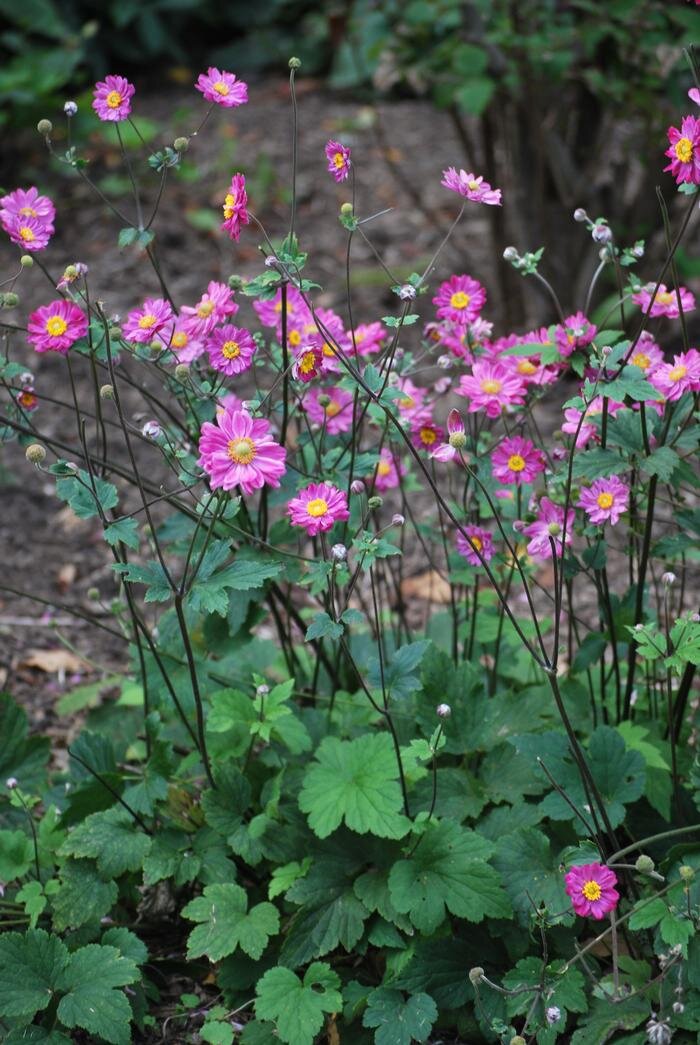Also known as windflower, anemones are grown for their beautiful, nodding blooms on long, wiry stems. The common name is derived from the Greek word anemoi, which in English means “winds”. The foliage looks similar between varieties, but size and bloom times vary between spring, summer, or fall. Fall-blooming Japanese anemones are particularly noteworthy because they fill the midsummer-to-fall gap in gardens. Flowers range from white to pink to rose, with yellow anthers surrounding a green/yellow center.
Anemones’ timeless grace enhances any garden. Depending on species, anemones can be some of the earliest perennials up. Those spring plants typically cover woodland floors with delicate, nodding blooms in soft shades, most often white, rarely tinged pink or purple. But the true showstoppers are fall-blooming anemones. These larger plants come in many shades of whites and pinks with petals ranging from single rows to double. From later summer to fall, there is no other perennial flower quite like Anemone in the border. They are prized for their late summer color that lasts into the fall. Their graceful flowers are freely and continuously produced on tall stems over lush mounding plants. They are also good to use in containers, mass plantings and for cut flowers. They are deer and rabbit resistant.
Perennial anemones are easy to grow, and once established, they can create large colonies of plants for grand displays. Plant in an area that receives part shade (protected from the hot afternoon sun) in well-drained soils rich in organic matter. If needed amend the soil with the addition of organic material to raise the level 2-3″ to improve the drainage. Peat moss, compost, ground bark or decomposed manure all work well. The extra organic matter will help keep a consistent moisture in soil, which will help avoid browning and crisping on leaf edges.
Anemones spread by underground rhizomes that multiply readily; in some cases they can be almost aggressive spreaders. However, their shallow roots make them easy to dig up. Water as needed during active growth periods; about 1″ of moisture per week is a good estimate. After blooming has finished for the season leave the foliage in place; don’t cut it off. The leaves will gather sunlight, create food through photosynthesis and strengthen the bulbs for the future. For a tidy appearance, remove old foliage before new foliage emerges in early spring. Divide clumps every 2 to 3 years in early spring. In shadier plantings, keep an eye out for powdery mildew, which can be a mild nuisance.




